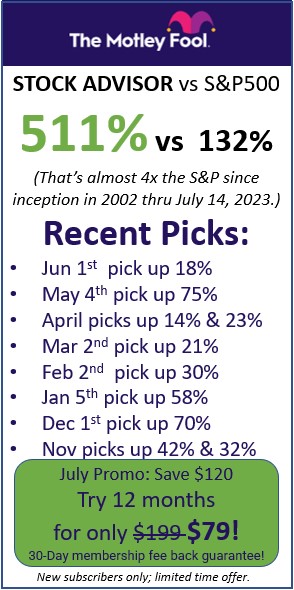
It was originally founded in 1848 as a non-profit marketplace for commodities, particularly agricultural products such as wheat, corn, and soybeans.
Arising into existence to allay the concerns of US merchants seeking to shield their commodities from volatile price fluctuation, the CBOT provided a centralized avenue for traders to enter into formalized contracts (forwards and futures).
By acting as a clearinghouse, the CBOT also mitigates the credit and default risk of counterparties engaged in transactions.
In July 2007, a merger between the CBOT and the Chicago Mercantile Exchange took place, creating the CME Group.
In August 2008, the New York Mercantile Exchange became part of the CME Group, and the 3 exchanges became Designated Contract Makers (DCM) of the CME Group.
Currently, the CBOT offers hundreds of options and futures on different products.
It is highly active in markets such as agriculture, energy, equities, and US Treasuries, providing an important risk-management function for thousands of its CBOT members.
Users and Purposes of CBOT
As one of the main derivative exchanges in the world, the CBOT serves important purposes for a wide variety of market participants including:
- Investors and portfolio managers
- Brokers and dealers, financial
- Non-financial companies
- Hedge funds
- Government entities
Its main functions, roles, and uses include:
- Being an orderly and efficient exchange enabling price discovery and liquidity in important products
- Creating the standardization of derivative contracts
- Mitigating exposure to price fluctuations in key assets (particularly volatile ones)
- Acting as a clearinghouse
- Serves diversification and risk-management needs
- Allows certain investors such as hedge funds to construct non-conventional investment strategies
- Permits certain investors to take speculative positions
Trading
THE PIT
The Pit is the physical trading platform where CBOT traders conduct transactions using the open outcry method of trading. Traders and brokers use shouting and certain hand signals to indicate buy or sell intentions. This method of trading has been to a large extent replaced by electronic trading systems.
ELECTRONIC TRADING
With the advent innovation and advancement in technology and software, financial exchanges sought to transition from the open outcry form of trading to faster, more efficient, and less costly electronic platforms. With simple front-end and network connectivity requirements, the CME Globex trading system allows traders from across the globe to access thousands of futures and options contracts on a virtually 24-hour basis, while offering real-time data, high speed, and high-volume capacity trading. This system plays an important role in providing liquidity to the derivative products in key markets. Based on trading rules, orders are entered electronically in an order book, and buy and sell orders are subsequently matched, thus ensuring a proper price-discovery and setting mechanism.
Types of Contracts Traded
The following table presents some of the most popular and heavily traded contracts covering the major asset classes: Trading is executed amongst the CME Group merged members (CME, CBOT, NYME).
| AGRICULTURE | ENERGY | EQUITY | BONDS/INTEREST RATES | FX |
| Grains& Oil Seeds | Crude Oil | US Index Fut and Options | STIR | G-10 |
| Corn | CL Light Sweet Crude Oil | E-mini S&P 500 (Dollar) | Eurodollar | AUD/USD |
| Wheat | CVF Crude Oil Volatility Ind | E-mini S&P 500 (Euro) | OPTMid-Curve | AUD/CAD |
| Soybeans | Oil (WTI) Financial | E-mini S&P MidCap 400 | 1-month Eurodollar | AUD/JPY |
| Palm Oil | BZ Brent Crude Oil | E-mini S&P SmallCap 600 | Euroyen TIBOR | AUD/NZD |
| Livestock | Ethanol | E-mini NASDAQ-100 | 3-Month OIS | CAD/USD |
| Live Cattle | EH Ethanol | S&P 500/Value | Eurodollar Calendar Spread | CAD/JPY |
| Lean Hogs | Natural Gas | S&P 500/Growth | US Treas. Fut and Options | CHF/USD |
| Feeder Cattle | NG Natural Gas | Technology SPCTR | 13-week T-bill | CHF/JPY |
| Dairy | Henry Hub Natural Gas | Intl Index Fut and Options | Ultra T-Bond FUT | EUR/CAD |
| Class II Milk | Electricity | E-mini MSCI EAFE | 2-Year U.S. Treasury Note | EUR/USD |
| Dry Whey | PJM Western Hub Peak | Nikkei 225 (Yen) | 3-Year U.S. Treasury Note | EUR/AUD |
| Powder | U6 ISO New England Term | FTSE/Xinhua China 25 | 5-Year U.S. Treasury Note | EUR/GBP |
| Softs | Refined Products | E-mini MSCI Emerging Markets | 10-Year U.S. Treasury Note | Emerging Mkts |
| Cocoa | Heating Oil | ETF Futures | Interest Rate Indexes | BRL/USD |
| Coffee | RBOB Gasonline | S&P Depository Receipts | U.S. Aggregate Bond Index | MXN/USD |
| Forest | 7f European Gasoline | PowerShares QQQ | Eurozone HICP Futures | ZAR/USD |
| Lumber | Coal | TRAKRS | Swaps | RUB/USD |
| Pulp | Central Appalachian Coal | TRAKRS PIMCO CRR | DJ CBOT Treasury Index | RMB/USD |
Clearing House Mechanism
As a clearinghouse for the derivative transactions conducted on the exchange, the CBOT acts as an intermediary to the counterparties involved. By enforcing margin requirements and the mark-to-market of daily profits and losses, the exchange significantly reduces the credit and default risk of the counterparties in a transaction. Along with the standardization of contracts, this clearinghouse function enhances market efficiency and liquidity while minimizing its risks.
For example, if a trader wishes to enter into a long futures contract, he/she must deposit an initial margin. This margin account is debited and credited on a daily basis depending on the price fluctuations in the underlying asset. Should the total value of the futures contract fall below what is referred to as the maintenance margin, the trader is responsible for depositing funds so as to bring it back up to the initial margin level.
Regulation
Derivative transactions on the CBOT trade in accordance with regulations mandated by the Commodity Futures Trading Commission (CFTC).
In 1982, National Futures Association (NFA) was formed with the aim of being an independent self-regulatory watch-dog organization.
Conclusion
The CBOT is an exchange providing trading in derivatives contracts and clearinghouse functions. It allows traders to buy and sell contracts on several products in asset classes such as agriculture, energy, metals, equities, bonds, and exchange rates. The majority of its trades are conducted electronically.

 The Truth About Internships
The Truth About Internships Using Morning Star to Evaluate Mutual Funds
Using Morning Star to Evaluate Mutual Funds Work vs Home: Which Property Type Is Right For Your Next Investment?
Work vs Home: Which Property Type Is Right For Your Next Investment?